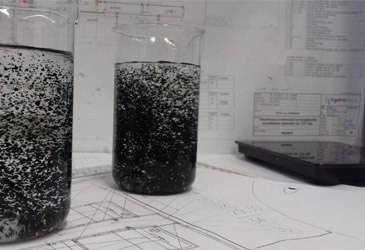Blog
Laboratory tests of highly polluted waste water using chemostat technology
Chemostat is used as a technology for partial treatment of wastewater, for example prior entering a public sewerage or prior next treatment step. In our laboratory we examined food industry wastewater with COD concentration (parameter representing organic pollution) from 2 000 to 4 000 mg/l. Removal efficiency ranged from 45 to 75 % depending on retention time in the system. Nitrogen (N) and phosphorus (P) removal was observed, too. Conforming to local law, wastewater effluent limits from wastewater treatment plants to watercourses usually cannot exceed tens of milligrams per liter. Therefore, chemostat is basically used as a pre-treatment technology.

More articles
Trip to Brazil and inspection of IC reactor´s parts preparation
As our company cares about smooth running of the U.S. project, a vice managing director was sent to check the production of parts of the anaerobic IC...
